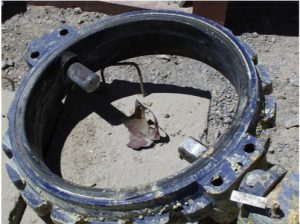Author: CGIS (CG Industrial Specialties)
The dilemma is for the valves to remain in service providing one of those singular functions and performing at a basic level required or demanded by the process. Severe services challenge that performance and life expectancy. SSVs must deliver a minimum performance over a minimum period of time. The valve industry does have a better understanding and agreement of what defines a Severe Service Control Valve (SSCV). Table 1 provides some reasonable thresholds that can be applied to any control valve situation and be used to make a reasonable determination that the application is severe and therefore requires a SSV.
An example would be where the fluid will likely be near or at a cavitating state. ISA RP75.23 provides basic formulas that can be used to determine whether the fluid will or will not cavitate in service. At this state, fluids are accelerated and their vapour pressure is reduced in a proportional relationship. Should the pressure reduce below the media’s vapour pressure, the fluid will separate into two or more phases during a condition known as flashing. Flashing by itself can and will be erosive, but if the downstream pressure recovery is such that the fluid is above its vapour pressure, the resultant collapse of the flashed gas creates the damaging condition of cavitation.





